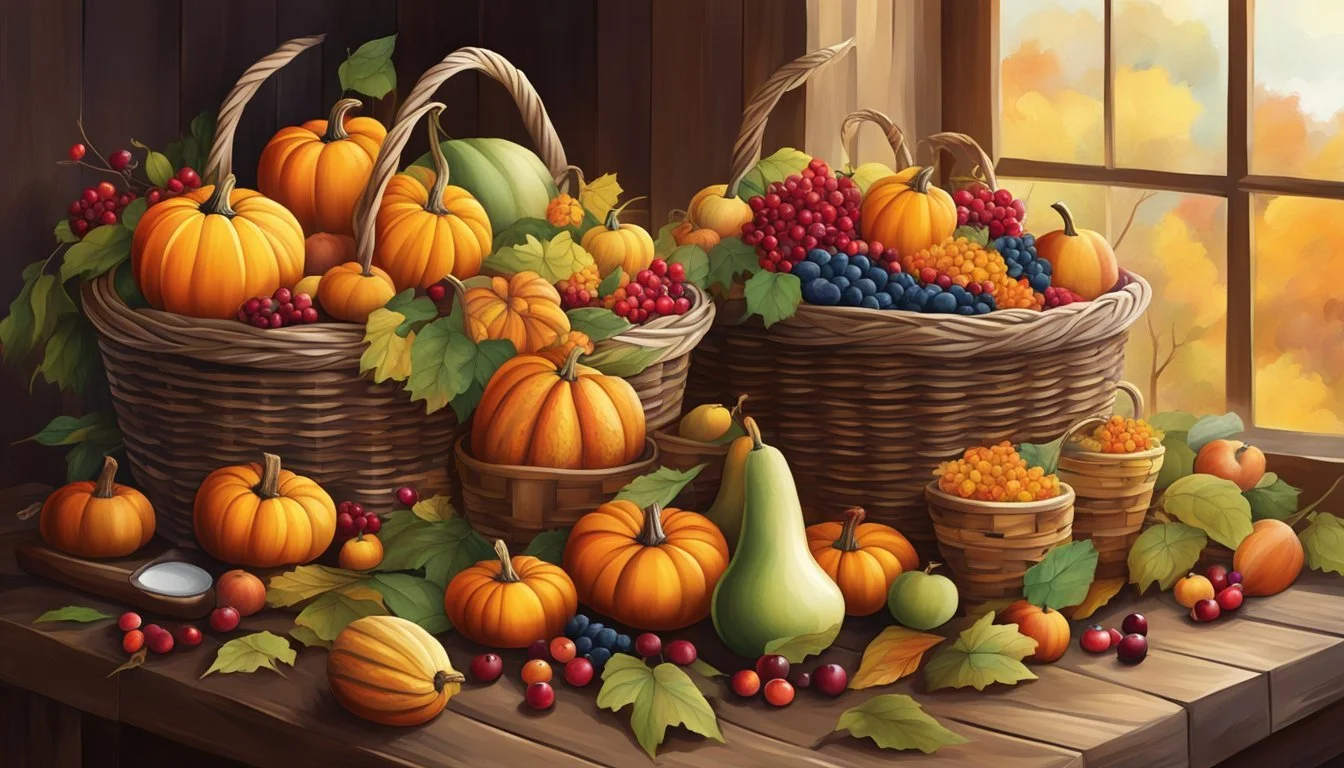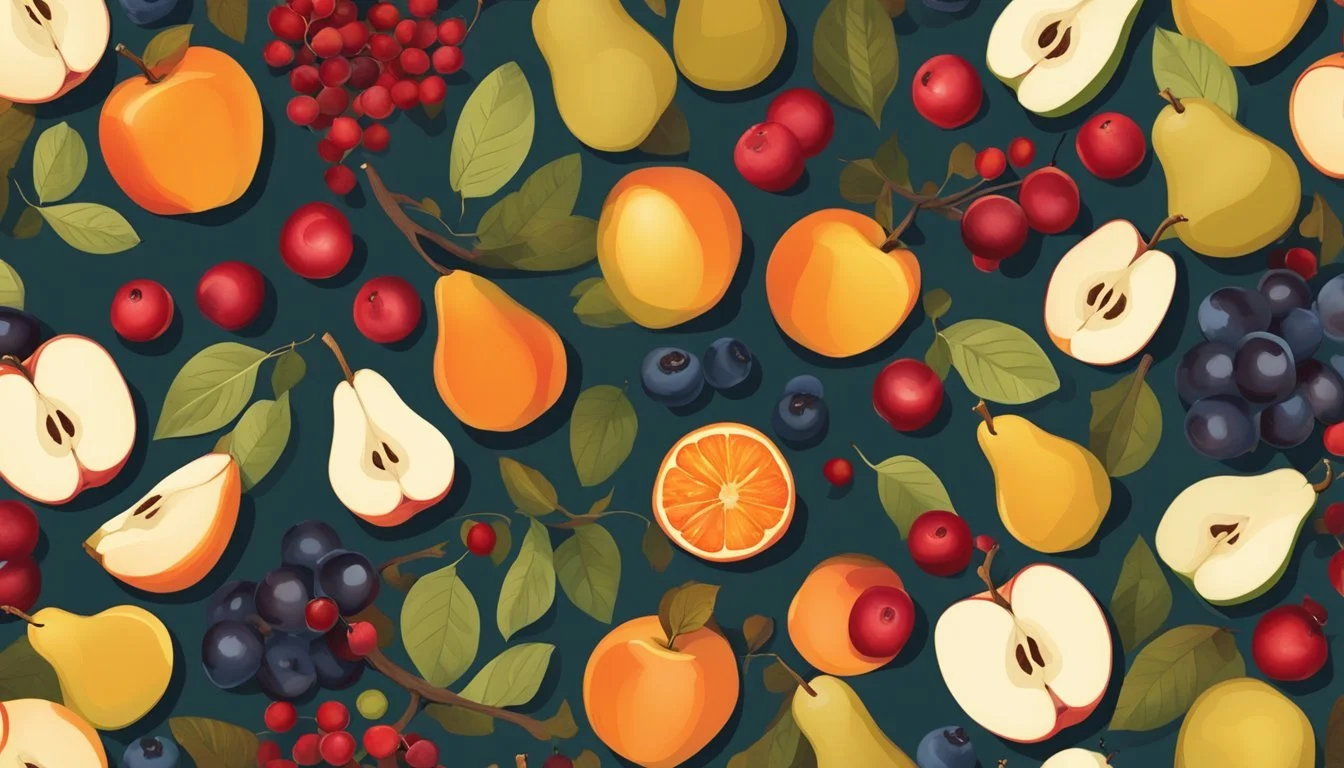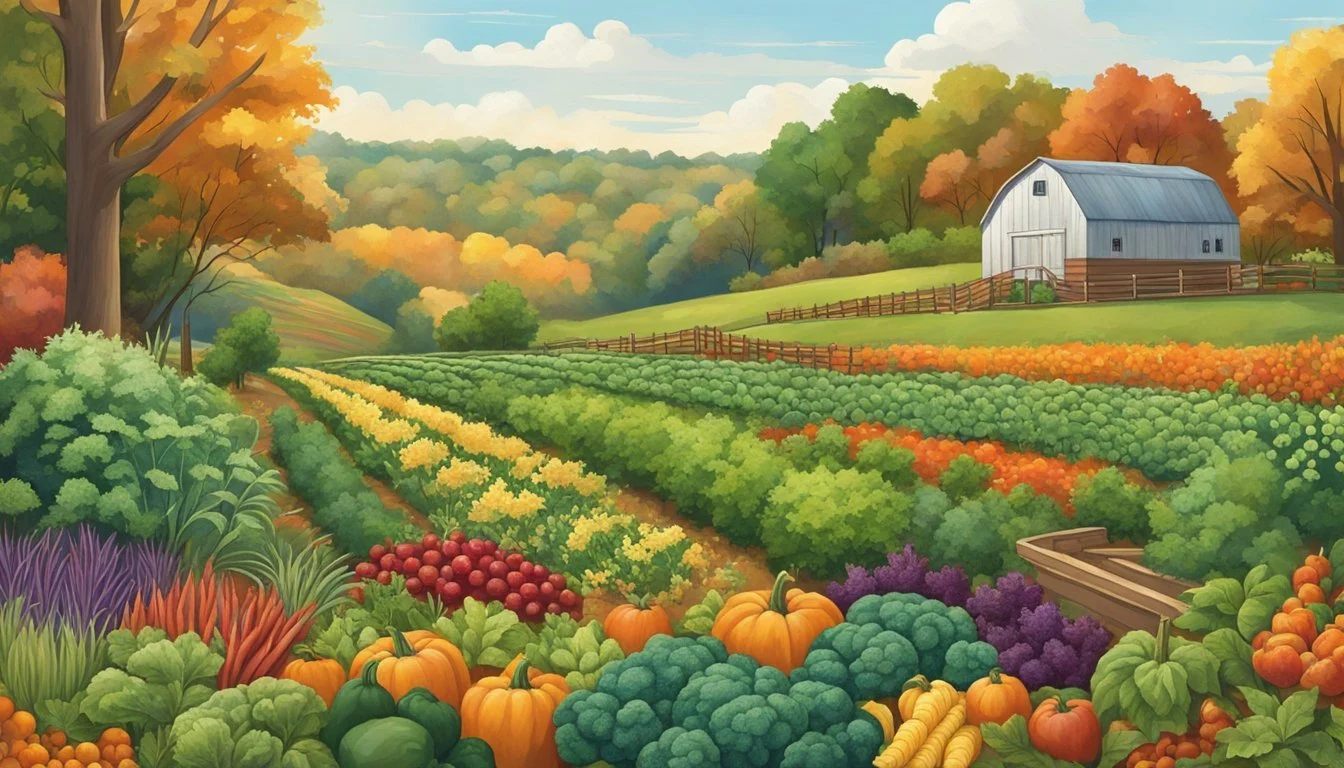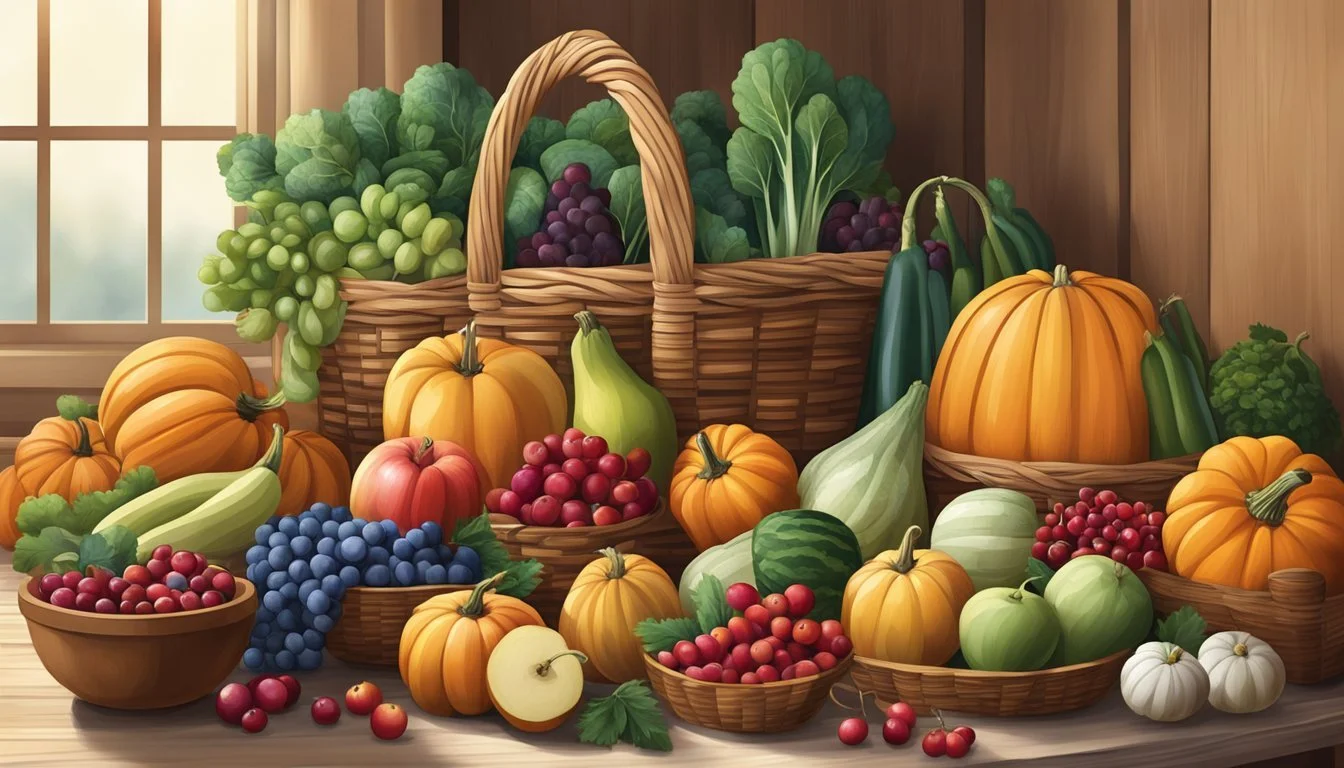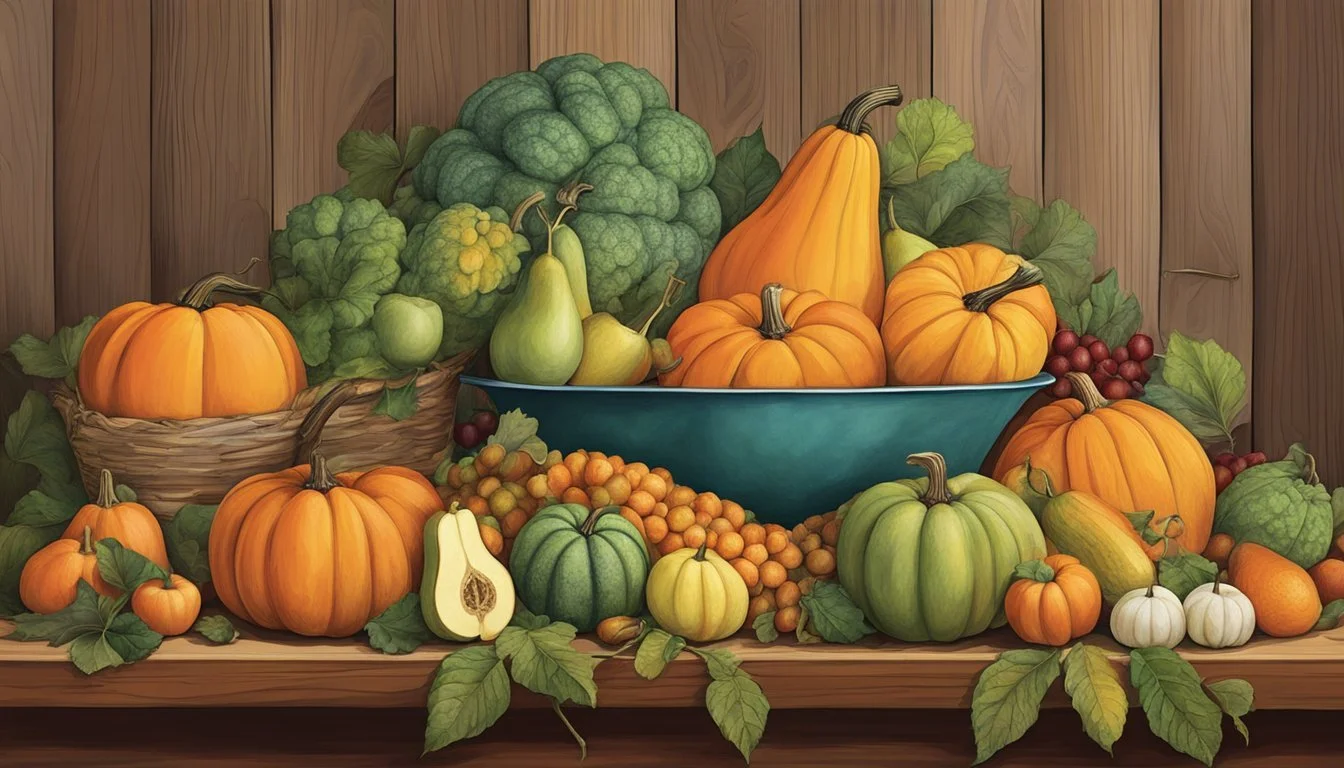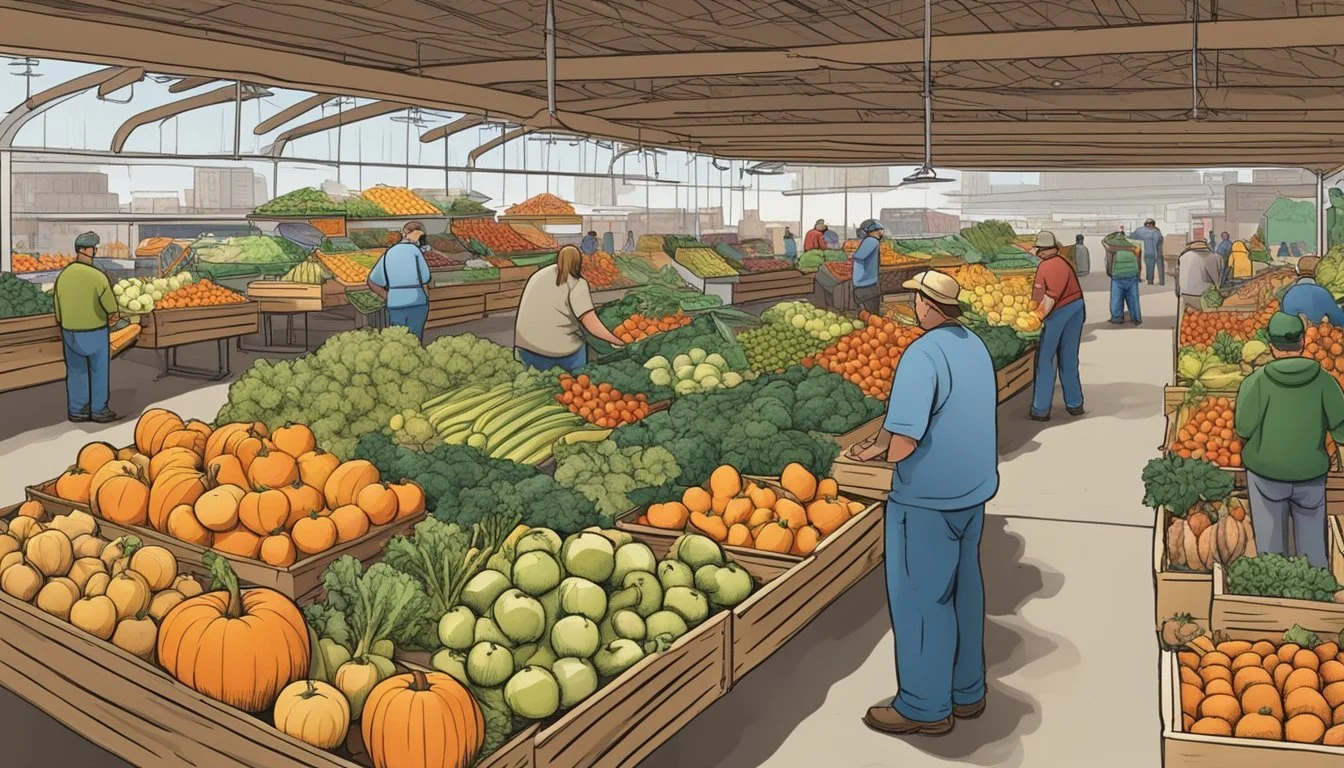Missouri Seasonal Fruit & Vegetables in November
A Guide to Fresh Produce Selection
This Article is Part of our Missouri Seasonal Fruit & Veg Calendar
In Missouri, the transition to November brings a definitive change in the landscape of locally available produce. The state's rich agricultural tapestry yields a variety of fruits and vegetables that reach their peak during different times of the year, with November marking the end of the harvest for certain crops while still offering an abundance of others. The availability of seasonal produce is a testament to Missouri's diverse climate and farming practices, which allow a range of produce to flourish.
The month's cooler temperatures and shorter days influence the types of fruits and vegetables that are harvested. Seasonal eating not only supports local farms but also ensures that Missourians have access to fresh, nutrient-rich foods. A produce guide or calendar can be particularly helpful for identifying what is freshly available. It can guide consumers to make informed choices, embrace the season's offerings, and contribute to a sustainable food system.
Missouri's November produce includes hearty vegetables and select fruits that are well-suited to the fall climate. While the summer staples have disappeared, the fields and orchards still offer a bounty, including late-harvest apples and robust root vegetables. These seasonal items are perfect for creating warming dishes that are synonymous with the time of year, providing both comfort and nutrition as the colder weather takes hold.
Missouri's Seasonal Produce Overview
In November, Missouri welcomes the transitional period between fall and winter, offering a diverse variety of in-season fruits and vegetables. State farmers and markets are stocked with produce that matches the cool, dwindling days of fall. Patrons can find a cornucopia of fresh, locally grown items.
Vegetables immensely popular during this month include:
Broccoli: Its deep green hues are a testament to its freshness during the fall harvest.
Cauliflower: (how long does cauliflower last?) A versatile vegetable that moves from the farm to the table.
Sweet potatoes: Among the staples of November, a perfect ingredient for hearty meals.
Pumpkins: While commonly associated with October, they remain plentiful in November.
Fruits available are more limited, but one can still enjoy:
Apples: With many varieties reaching their peak, they are perfect for a plethora of fall recipes.
While winter starts to send its early chills, Missouri's farms ensure the residents have access to nutritional produce that can be savored alone or within warming dishes. These items reflect the robust agricultural system in Missouri, with each product being the result of local farmers' dedication to supplying fresh, seasonal produce for their communities.
Benefits of Eating Seasonally
Eating seasonally brings substantial health benefits. Seasonal produce is often at its nutritional peak, offering a higher concentration of vitamins and minerals. For instance, brussels sprouts and cabbage, which are abundant in Missouri from August to November, are packed with nutrients that may boost immunity and reduce inflammation.
Seasonal fruits and vegetables also tend to have optimal flavor. These items are typically harvested at their ripest, which translates to a superior taste experience. Fresher produce also has a crisp texture, as it doesn't undergo long storage periods that can dull flavor and soften texture.
Furthermore, eating seasonally encourages a diverse diet. Regularly incorporating a variety of fruits and vegetables, such as root vegetables like celeriac available through October, can introduce different nutrients and phytochemicals to one's diet. This variety is linked to reduced disease risk and improved overall health.
Seasonal Produce in Missouri Harvest Period Brussels Sprouts August - November Cabbage June - November Carrots May - November Cauliflower August - November Celeriac/Celery Root August - October
Moreover, seasonal eating supports environmental sustainability. Produce grown in-season requires less transportation and storage, reducing carbon emissions and energy usage. Consumers benefit from this cycle, as in-season produce is often more affordable due to lower transportation and storage costs.
In summary, consuming seasonal produce, particularly in regions like Missouri during November, enhances one's diet with fresh, nutrient-rich, and flavorsome fruits and vegetables while fostering environmental and economic benefits.
Seasonal Fruits Available in November
November in Missouri offers a bountiful harvest of fruits that are at their peak. Consumers can find fresh flavors and vibrant colors in these seasonal offerings, which are ideal for a range of recipes.
Apples
Missouri’s apple harvest continues through November, with a variety of apples available, from tart Granny Smiths to sweet Red Delicious. These apples are perfect for baking, making cider, or eating fresh.
Persimmons
The persimmon, particularly the native American Persimmon, becomes ripe in November. They have a rich, honey-like flavor and are used in desserts such as puddings, cookies, and bread.
Cranberries
Though not widely grown in Missouri, cranberries come into season and are often available from northern suppliers. They are a staple for Thanksgiving dishes and can be used to make sauces, juices, or dried as a snack.
Pomegranates
While pomegranates are not typically grown in Missouri, they do become available in markets during November. Their seeds, known as arils, add a juicy burst of flavor to salads and are also popular for juicing.
Seasonal Vegetables to Enjoy
In November, Missouri offers an array of seasonal vegetables that are not only fresh and flavorful but also versatile in cooking. Here is a closer look at some of the vegetables at their peak during this month.
Potatoes
Missouri's November chill ushers in the perfect time for potatoes. A staple for hearty meals, they are ideal for baking, mashing, and roasting. They bring substance to salads and are a key ingredient in various recipes, delivering comfort in every bite.
Winter Squash
Winter squash provides a sweet, nutty flavor that can enhance any autumn meal. Varieties like butternut or acorn squash can be roasted, pureed for soups, or incorporated into sweet desserts. Their dense flesh offers a rich source of vitamins and fiber, making them both nutritious and satisfying.
Brussels Sprouts
Brussels sprouts hit their stride in November, with a slightly sweet and earthy taste that deepens after a frost. High in nutrients and perfect for roasting or sautéing, they make a flavorful addition to salads and side dishes.
Cabbage
Cabbage is in season and brings a crisp texture to a variety of dishes. It can be used fresh in slaws, sautéed for a warm dish, or fermented to create sauerkraut, adding both flavor and beneficial probiotics to meals.
Turnips
A root vegetable often overlooked, turnips have a peppery yet sweet flavor. They can be roasted to bring out their natural sugars or mashed as a lower-carb alternative to potatoes. Turnips also contribute important nutrients to the November diet.
Each of these vegetables can be the centerpiece of a meal or serve as an accompaniment to dishes, making the most of Missouri's November produce.
Herbs and Greens in November
November in Missouri is a time when gardeners can still enjoy a bounty of leafy greens and herbs, which thrive in the cooler temperatures. Many greens can be used in a variety of recipes, from salads to pesto.
Kale
Kale (What wine goes well with kale?) is a hearty green that can withstand colder temperatures, making it an ideal crop for November in Missouri. Recipes often call for it as a nutrient-dense ingredient in smoothies, soups, and stews. It can be harvested continually as long as the leaves are allowed to mature.
Spinach
Spinach is another cold-tolerant vegetable, and in Missouri, it can typically be harvested into late fall. This versatile green is rich in vitamins and minerals. Spinach is commonly used in salads, as a cooked side dish, and as a component in pasta dishes and quiches. (What wine goes well with quiche?)
Arugula
Though more delicate than kale and spinach, arugula (how long does arugula last?) also grows well in cooler weather and can usually persist through November. It has a peppery flavor, making it popular in mixed greens salads and as a fresh topping on pizzas. Arugula can also be incorporated into pesto for a spicy twist on the classic sauce.
Where to Find Seasonal Produce
Missouri residents have several options to find fresh, seasonal produce in November. These options range from local farmers markets, to direct purchases from farms, to your nearby grocery stores. Each of these choices supports local agriculture and offers a variety of seasonal fruits and vegetables.
Local Farmers Markets
Farmers markets in Missouri are vibrant community hubs where one can find an array of November harvests. They typically offer a selection of fresh produce directly from local growers. St. Louis, Kansas City, and Columbia are just a few cities where these markets are popular. Shoppers can expect to find items such as:
Brussels Sprouts
Cabbage
Carrots
Sweet Potatoes
These markets not only provide fresh produce but also a chance to meet and support the farmers who cultivate it.
Missouri Farms
Visiting a farm in Missouri presents a unique opportunity to purchase produce at the source. Farms may offer pick-your-own experiences or pre-harvested goods for sale. This can be a fun and educational outing, allowing individuals to see where and how their food is grown. Notable farms include:
Centennial Farms, famous for its apples and pumpkins.
Thies Farm & Greenhouses, offering a range of vegetables through their Pumpkinland fun during the fall.
Grocery Stores
For convenience, grocery stores in Missouri stock seasonal vegetables from both local and non-local sources. While availability can vary, grocery stores strive to supply a selection that is fresh and in season. November selections often include:
Apples
Pears
Winter Squash
It's always worth asking a store employee if they can provide information about the origin of the produce to ensure it meets your preference for local sourcing.
Preparation and Storage Tips
In Missouri, November is a pivotal month for storing and preparing seasonal fruits and vegetables to ensure their longevity and retain their flavors. For those managing a November harvest, here are key tips to preserve quality:
Potatoes: Once harvested, they should be cured in moist air for 1 to 2 weeks. Potatoes last best at temperatures ranging from 35 to 40 degrees Fahrenheit in a dark place. Sweetening at temperatures below 50 degrees is reversible—expose them to 70 degrees for a week before cooking to return their natural flavor.
Brussels Sprouts and Cabbage: Store these vegetables in a cool, moist environment to maintain freshness. They can typically last several weeks when kept at the optimal temperature of just above freezing, ideally in the crisper drawer of a refrigerator.
Root Vegetables (Carrots, Celeriac/Celery Root): Similar to potatoes, these should be kept in cool storage, with high humidity to prevent shriveling. They can be stored in a basement or root cellar in boxes of damp sand to maintain freshness.
Cyclamen Persicum: For those growing ornamental plants like cyclamen, ensure it blooms in the cold by keeping the soil moist and free from frost.
When preparing these foods:
Wash vegetables thoroughly under cold running water before storing or cooking.
Blanching certain vegetables like Brussels sprouts can enhance their taste and prepare them for freezing.
Herbs and Spices: To complement dishes with November’s harvest, dry herbs and freshly ground spices should be added to recipes for an aromatic and flavorful kick.
Lastly, incorporating Greek Yogurt as a dressing base or in dips, provides a creamy texture and refreshing taste alongside the heartiness of seasonal produce. Always keep it refrigerated and tightly sealed.
Incorporating Seasonal Produce in Recipes
November in Missouri offers a variety of seasonal fruits and vegetables that can elevate home cooking and baking. Chefs and home cooks alike can take advantage of the rich flavors and nutritional benefits.
Fruits such as persimmons and pears appear in farmers' markets and are perfect for autumnal desserts. Pears can be poached or baked into tarts, while persimmons add a sweet, honey-like flavor to cakes and puddings.
Root vegetables like sweet potatoes and turnips are abundant and can be roasted to enhance their natural sweetness, or pureed into comforting soups. Cauliflower, also in season, can be transformed into creamy soups or roasted with herbs and spices.
Incorporating leafy greens such as kale and spinach into meals adds both color and nutrients. They are versatile; sautéed with garlic for a healthy side dish, or used raw in salads for a fresh component.
For those looking to cook with seasonal squashes, varieties like butternut and acorn can be stuffed, turned into a savory casserole, or used in sweet pies. Their flexibility in both savory and sweet applications makes them a staple in November seasonal cooking.
Here are some simple ways to use November produce:
Persimmons: Bake them into bread or incorporate into salads.
Pears: Create chutneys or compote for pastries.
Sweet Potatoes: Use in pies or serve mashed with spices.
Turnips: Roast with rosemary or blend into a creamy mash.
Cauliflower: Make a gratin or pickle for condiments.
Kale/Spinach: Add to smoothies or make into crispy chips.
Squashes: Prepare as a filling for ravioli or roast as a side dish.
These ingredients not only offer seasonal flavor but also inspire creativity in the kitchen, allowing for dishes that are both wholesome and hearty during the fall season.
Planning Ahead for Winter
As November heralds the approach of winter in Missouri, gardeners and consumers can prepare by focusing on available seasonal produce and planning their grocery lists accordingly. Winter demands extra attention to both the preservation of food and the selection of crops that can withstand the colder temperatures.
Grocery List for Winter:
Root Vegetables: Potatoes, carrots, and beets store well and can be used in a variety of dishes.
Winter Squash: Varieties like butternut and acorn squash last long and are versatile for cooking.
Leafy Greens: Hardy greens such as kale and collards can sometimes be grown in winter gardens.
Preserved Goods: Canned or frozen fruits and vegetables from earlier harvests.
One should consider preserving fall harvests, such as canning tomatoes or freezing corn, to extend their food repertoire in winter. Missouri residents also benefit from indoor farmers' markets, where local produce can often be found despite the cold weather outside.
Planning involves understanding which foods last through the winter months. Sturdy vegetables and fruits are prioritized on the grocery list for their longevity and nutrient density. They should keep their pantry stocked with non-perishable items like dried beans and grains, which can complement fresh produce and provide balanced meals.
Remaining knowledgeable about local produce availability allows Missourians to make informed decisions and maintain a varied diet throughout the winter. By planning ahead, they ensure their tables remain bountiful with healthful foods even as the gardens lay dormant.

